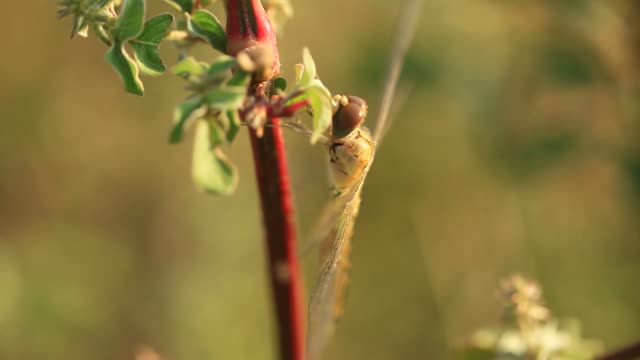Premium Only Content

Dragonfly Insect Life Cycle You Don't Know
Dragonfly species (Anisoptera) are characterized by long bodies with two narrow pairs of intricately veined, membranous wings that, while generally transparent, may have coloured markings. Unlike damselflies, the front and rear wing pairs are shaped differently.
In addition, dragonflies rest with their wings spread horizontally, rather than held vertically against each other (with the exception of one very small family, Epiophlebiidae). Dragonflies have a more powerful build and are generally much stronger fliers than damselflies.
The globe skimmer (or wandering glider, Pantala flavescens), a migratory dragonfly, for example, makes an annual multigenerational journey of some 18,000 km (about 11,200 miles); to complete the migration, individual globe skimmers fly more than 6,000 km (3,730 miles)—one of the farthest known migrations of all insect species. Dragonflies also have huge bulging eyes that occupy most of the head, giving some a field of vision approaching 360 degrees.
The winged adults are diversely coloured in a variety of shades ranging from metallic to pastel. Compared with other insects, they are large, with some having wingspans of up to 16 cm (about 6 inches). Even the smallest species are about 20 mm (0.8 inch) across. As well as being extremely agile fliers, they are also among the fastest insects. Dragonfly wing muscles must be warm to function optimally, and so, if cool, the insect often engages in wing-whirring and basking in the sun to generate heat before taking flight.
The dragonfly’s speed and agility contribute to its being one of the most effective aerial predators. Small flying insects are the usual fare, but some dragonflies regularly consume prey that is 60 percent of their own weight.
Young dragonflies, called larvae or sometimes nymphs or naiads, are aquatic and are as dedicated predators under water as the adults are in the air. The functionally wingless larvae are usually mottled or dull in colour, matching the sediments or water plants among which they live.
They have bulging eyes somewhat similar to the adults, but possess a formidable anatomical structure not present in the adult. Called the “mask,” it is a fusion of the larva’s third pair of mouthparts. Disproportionately large, the mask folds beneath both the head and thorax when it is not in use.
At the end of the mask is a set of fanglike pincers used to seize prey such as worms, crustaceans, tadpoles, and small fish. Different species of dragonfly larvae can be described as sprawlers, burrowers, hiders, or claspers. Their shape, metabolism, and respiration differ concordantly with the microhabitat they occupy.
-
 0:20
0:20
CWFell
3 years ago $0.01 earnedIf You Don't Know
19 -
 21:18
21:18
BlabberingCollector
1 day agoJKR On Scripts, Stephen Fry Rees, Body Double Casting Tells All | Wizarding World News Roundup
2.58K1 -
 13:46
13:46
GritsGG
13 hours agoWe are the BEST Warzone Duo!
1.16K -
 4:42:42
4:42:42
The Pascal Show
17 hours ago $0.11 earnedDIDDY TRIAL LIVE! Feds FINAL WITNESS Testifies! Gov't To Rest Today Diddy Trial Day 28
8.5K1 -
 1:51:14
1:51:14
The Michelle Moore Show
1 day ago'The Iran-Israeli Conflict...What It Means For America, Florida's Alligator Alcatraz, UK Babies to Receive DNA Testing, and more' Lt. Mark Taylor: The Michelle Moore Show (June 23, 2025)
19.5K41 -
 3:15:48
3:15:48
FreshandFit
6 hours agoMyron And Zherka Kick Out Annoying Rude Girls!
197K42 -
 1:57:25
1:57:25
Inverted World Live
8 hours agoGiant Eyeball Falls Out of Sky | Ep. 63
112K11 -
 1:47:25
1:47:25
Badlands Media
12 hours agoBaseless Conspiracies Ep. 138: Nuclear Narratives, Controlled Collapse & the Currency of Fear
63K37 -
 3:00:11
3:00:11
TimcastIRL
8 hours agoTHE WAR IS OVER, Trump Announces CEASEFIRE In Israel Iran War | Timcast IRL
281K219 -
 8:15:59
8:15:59
RalliedLIVE
10 hours ago $10.09 earnedMonday WZ - Specialist Addict Gets Wins
100K5